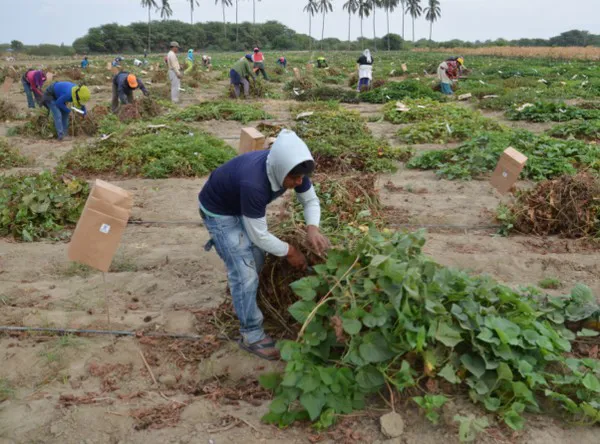Extreme weather events and other effects of climate change already challenge farmers’ ability to grow enough food, which is expected to become more challenging as the atmosphere warms. One study predicted that with each degree (°C) increase in the global mean temperature, yields of major staples could decrease by between 3 and 7.4 percent, without more climate-smart varieties and technologies.
The good news is that sweetpotato could help fill the gap, since that robust root crop has the potential to produce food under high temperatures, according to the results of research published this week in Nature Climate Change. The article’s authors report that sweetpotato biodiversity includes significant heat tolerance, which could be harnessed to boost food and nutrition security well into the future, as rising temperatures threaten the productivity of other staples.

“Sweetpotato is definitely a climate resilient crop, and breeders can use the species’ biodiversity to make it even more resilient,” said Bettina Heider, a researcher at the International Potato Center (CIP) and lead author of the article published in Nature Climate Change.
To assess sweetpotato’s capacity to cope with high temperatures, Heider and other scientists from CIP, the French Agricultural Research Center for International Development (CIRAD) and the French National Research Institute for Sustainable Development (IRD) screened an extensive sampling of the species’ agrobiodiversity, from the CIP genebank in Lima, Peru. The genebank safeguards one of the worlds largest collections of sweetpotato biodiversity – more than 5,500 accessions from 50 countries in Africa, Asia and the Americas – in trust for humanity. The researchers planted 1,973 of those accessions in the desert of northern Peru to evaluate their response to heat stress.
During two crop cycles, in the southern hemisphere winter and summer – when mid-day temperatures can reach 40 °C – the scientists monitored the plants’ development over the course of 120 days using hand-held instruments and drones. Upon harvesting, they assessed yields, the number and quality of sweetpotatoes, and the amount of foliage each plant produced.
“The advantage of remote sensing technology is that we were able to get a thermal snapshot of 1,973 accessions at a precise moment,” Heider said.
For the full article on CIP, please click here.
